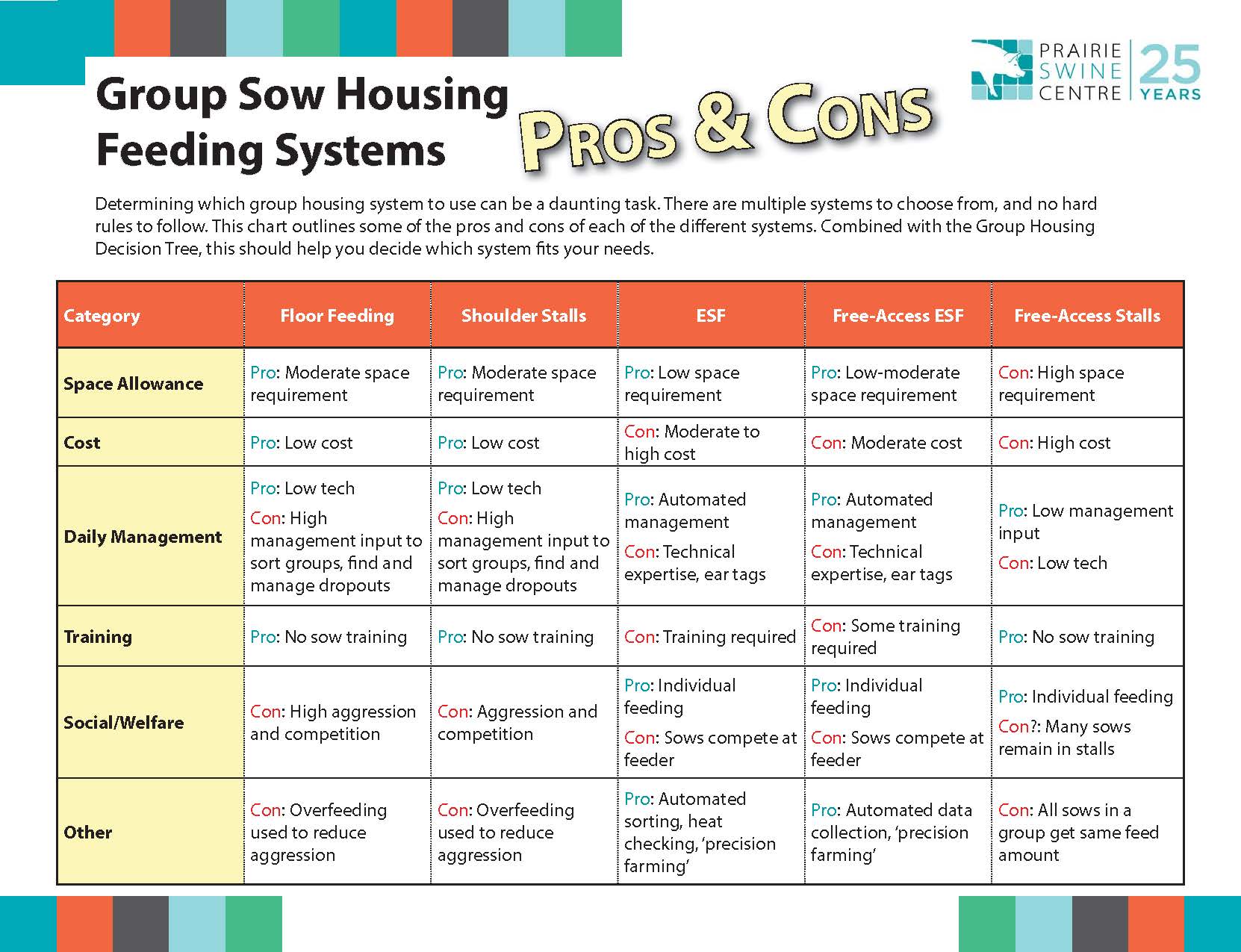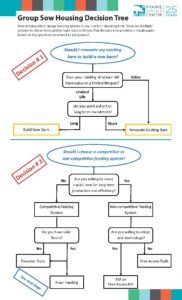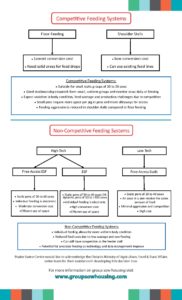Group Sow Housing Resources
Posted in: Pork Insight Articles, Prairie Swine Centre, Press Releases, Welfare by Ken Engele on November 23, 2018 | No Comments
EUTHANASIA – CODE OF PRACTICE FOR THE CARE AND HANDLING OF PIGS
Posted in: Prairie Swine Centre, Swine Innovation, Welfare by admin on October 26, 2017 | No Comments
The following is a list of acceptable and unacceptable methods of euthanasia of individual animals for
use on-farm, as well as methods that are only considered acceptable with the noted conditions. The
chart is based on the information that was available at the time of publishing1. For any method to be
considered acceptable, it must render the animal immediately insensible and the animal must not return
to sensibility prior to death. Individuals who euthanize pigs must be trained in the appropriate methods.
Science of Ethology
Posted in: Pork Insight Articles, Prairie Swine Centre, Press Releases, Welfare by admin on August 8, 2017 | No Comments
 The field of Animal Science experienced an expansion of its goals during and subsequent to the 1960s. Much of this shift could be explained by concern over the intensive production practices that had developed. In addition to the goals of productivity and efficiency, issues such as food safety, environmental protection, and animal welfare became issues for the public, and therefore the producer. Animal agriculture not only had to be efficient, but it had to be carried out in a socially conscious manner. Just as productivity and efficiency involved several disciplines, the new goals (impact on behavior and welfare) were also best addressed in a multi-disciplinary manner, including several new ones.not sure about this, can we be more specific?
The field of Animal Science experienced an expansion of its goals during and subsequent to the 1960s. Much of this shift could be explained by concern over the intensive production practices that had developed. In addition to the goals of productivity and efficiency, issues such as food safety, environmental protection, and animal welfare became issues for the public, and therefore the producer. Animal agriculture not only had to be efficient, but it had to be carried out in a socially conscious manner. Just as productivity and efficiency involved several disciplines, the new goals (impact on behavior and welfare) were also best addressed in a multi-disciplinary manner, including several new ones.not sure about this, can we be more specific?
Ethology, or the study of animal behaviour, has had a role during both eras of Animal Science. As the discipline developed within biology in the mid-twentieth century, its applied component studied means to improve productivity in farm animals. Although a relatively minor discipline of the day, its contribution to animal productivity included reproductive, maternal, social and feeding behaviours as well as environmental control. There were few scientists in applied ethology. In the 1970s only three Canadian universities had agricultural faculty for whom behaviour could be called their primary discipline.
With greater emphasis on social concerns, ethology took on an expanded role, particularly in the area of animal care and welfare. This goal is still multi-disciplinary (see chapter on Animal Welfare Science), but ethology has been the most widely recognized of those disciplines. Much of the work has been to determine how well an animal can adapt to its production environment. In meeting this need for welfare assessment the discipline of ‘applied ethology’ has to some degree become the discipline of ‘welfare science’. Many of its scientists have become proficient, through personal training or collaboration, in disciplines such as stress physiology, immunology and environmental management.
However, the discipline also retains a strong production component. As consumers demand a change in production practices, ethology joins with other disciplines in finding ways to produce efficiently under the new standards. As an example, prod-free handling has become the standard for most situations in the pig industry for reasons of both welfare and meat quality. Ethology has contributed to this transition in management through facility design, handling methods, and training of personnel.
The bulk of this publication is on sow housing and management. Once the industry within a country decides to move to group housing, the role of ethology has been to develop facilities and management methods to ensure efficient production within those systems. Thus we now talk of grouping strategies, mixing vs feeding based aggression, and competitive vs non-competitive systems. All of these are based on behavioural principles.
Better Understanding the Pig’s Perception of Space
Posted in: Economics, Pork Insight Articles, Production, Welfare by admin on July 13, 2017 | No Comments
This presentation describes the decision basis for floor space allowance in terms of behaviour, production and economics. There must be enough space to prevent stress from overcrowding (a subjective issue) as well as enough space to maintain maximum growth while still striving for the greatest production per unit of area. This presentation also discusses different guidelines for space including stall size and eating spaces.
EFFECTS OF LARGE GROUP SIZES ON PERFORMANCE OF GROWER-FINISHER PIGS
Posted in: Pork Insight Articles, Prairie Swine Centre, Production, Welfare by admin on July 6, 2017 | No Comments
On the basis of these experiments, forming grower-finisher pigs into group sizes of up to 108 pigs/pen does not appear to have any detrimental effects on overall performances. Commonly held fears of increased levels of aggression and behavioural vices with increasing group sizes were not substantiated in our experiments. Housing pigs up to 108 pigs with adequate resources appears to have only minor effects on productivity and social behaviour of grower-finisher pigs.
THE FUTURE OF SOW HOUSING: STALLS OR GROUPS
Posted in: Nutrition, Pork Insight Articles, Prairie Swine Centre old, Welfare by admin on | No Comments
One of the more controversial aspects of pig production is the housing of gestating sows. Gestation stalls have been identified as one of the three most restrictive practices, along with battery cages for hens and crates for veal calves, throughout the history of the modern animal welfare movement.
This speech outlines pros and cons of four different group housing systems:
- Floor feeding
- Low cost
- High space requirement
- Increased agression
- Trickle/Bio-Box feeding
- Lowered aggression
- Moderate space requirements
- High cost
- Individual feed stalls
- Meets individuals nutritional needs well
- Increased labour costs but decreased space and input
- minimal agression
- ESF
- Greatest control of feed intake
- Ability to monitor animals intake directly over time
- High cost
- additional training
ADDRESSING CONSUMER CONCERNS: ANIMAL WELFARE AND THE SWINE INDUSTRY
Posted in: Pork Insight Articles, Welfare by admin on | No Comments
The scientific understanding and measurement of animal welfare is no longer limited to production parameters but also includes the physical, environmental, nutritional, behavioral and social needs of the animal or groups of animals under the care, supervision or influence of people. Addressing these needs should decrease stress (a good thing for animals) and improve performance (a good thing for producers.)
The public has started to demand public assurances (guidelines, certifications, audits) that producers are raising animals in an acceptable manner. The purpose of this presentation is to provide an overview of some of the recent programs that have been developed in the United States to provide public assurance about animal welfare .
Farm animal welfare in a world of changing expectations
Posted in: Pork Insight Articles, Welfare by admin on July 5, 2017 | No Comments
Cultural attitudes toward animals have been changing rapidly during the past 50 years. These changes have culminated in some remarkable and very recent developments in farm animal welfare. In the United States, guidelines and audit procedures, designed to assure consumers that animal welfare standards are being met, are currently being introduced by chain restaurants and other major players in the food industry. The European Union has agreed to implement major changes in production methods including phasing out the battery cage for laying hens and the gestation stall for pregnant sows. To prepare for such changes, the animal industries need certain services and resources to be in place: ( 1) research, development and expertise to ensure that acceptable methods are accessible and well tested, (2) economic conditions that favor the timely adoption of such methods, (3) a regulatory environment adequate to encourage appropriate changes and to assure the public that key concerns are being met, and ( 4) organizational leadership and infrastructure to help the animal industries anticipate and prepare for emerging issues. The animal industries need to act promptly to ensure that these services are in place, in order to promote a smooth transition to production standards and methods that will meet changing expectations.
Management strategies for the farrowing sow and her piglets
Posted in: Pork Insight Articles, Prairie Swine Centre, Welfare by admin on June 6, 2017 | No Comments
Outline
• Needs of the sow & her piglets
• Wild vs Domestic life…
• What can we do for the sow?
• What can we do for piglets?
– Basic care in farrowing
– Preparation for weaning
• Conclusions
Summary
• In farrowing: consider the sow- her feeding, comfort and behaviour
• For piglets: the farrowing room is an important learning environment!
• Increased experience of feed, social interaction and varied materials will reduce fear and help prepare pigs to grow
Enrichment and Exercise for Swine!
Posted in: Pork Insight Articles, Prairie Swine Centre, Welfare by admin on | No Comments
Enrichment and exercise are both currently required by the code of practice. This presentation outlines how to properly implement enrichment, different types of enrichment as well as the benefits of enrichment and exercise.
Enrichment and Exercise for Swine – Yolande Seddon, Prairie Swine Centre [Compatibility Mode]












